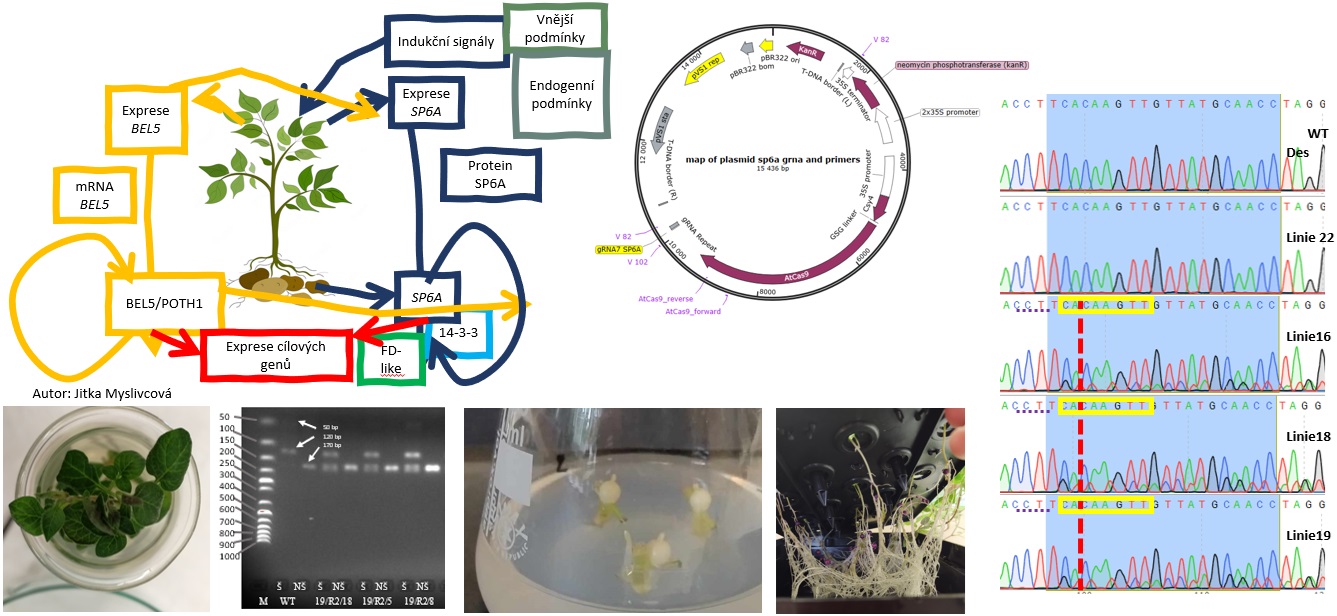Tuber establishment has many similarities with flowering induction.
Inductive conditions > systemic signal generation in leaves > signal delivery through phloem to stolon > amplification and integration of signalling pathways > change of developmental program.
Mobile tuberigenic signal is very complex – many transcription factors involved:
- SP6A protein (florigen homologue – flowering locus T)
- BEL5 mRNA
Methodical approaches:
- Different cultivation techniques (in vitro, hydroponics, pot experiments)
- Large collection of plant material - cultivars with different ecological requirements and sequenced genomes, genotypes of Andean potato subspecies including the model genotype 7540 dominantly used for molecular studies, or a spontaneously tuberizing line
- Mutagenesis of mobile signals - use of RNAi and CRISPR/Cas9 techniques
- Mutagenesis targeted to enhance phloem flow - increase in signal mobility
- Broad spectrum of methodological approaches: cultivation of plant material, transformation via Agrobacterium, genotyping, mutation characterisation by sequencing, expression analyses including qRT-PCR, phenotyping (basic and advanced physiological and biochemical analyses)
Publications:
Zounková, A., Konečný, J., Lipavská, H., Mašková, P.*: 2024, BEL transcription factors in prominent Solanaceae crops: the missing pieces of the jigsaw in plant development. Planta, 259:14.
Ševčíková, H., Mašková, P.*, Lipavská, H.: 2020, Root cultures of spontaneously tuberizing potato mutant lacking manganese-stabilizing protein isoform exhibit growth and sugar status changes similar to the roots of intact plants. Journal of Plant Physiology, 245, 153091.
Ševčíková, H., Mašková, P., Tarkowská, D., Mašek, T., Lipavská, H.: 2017 Carbohydrates and gibberellins relationship in potato tuberization, Journal of Plant Physiology, 214, 53–63.






















